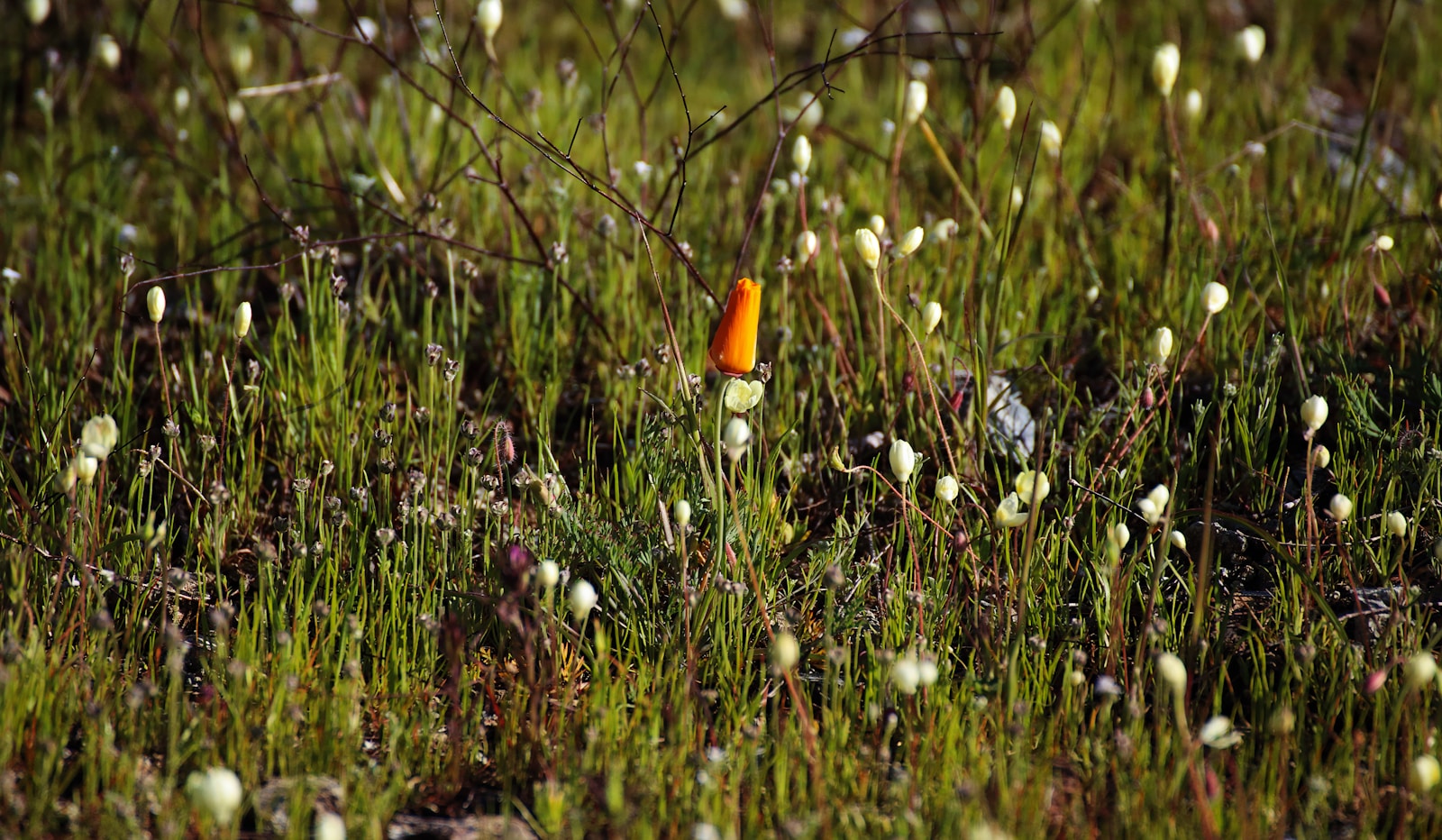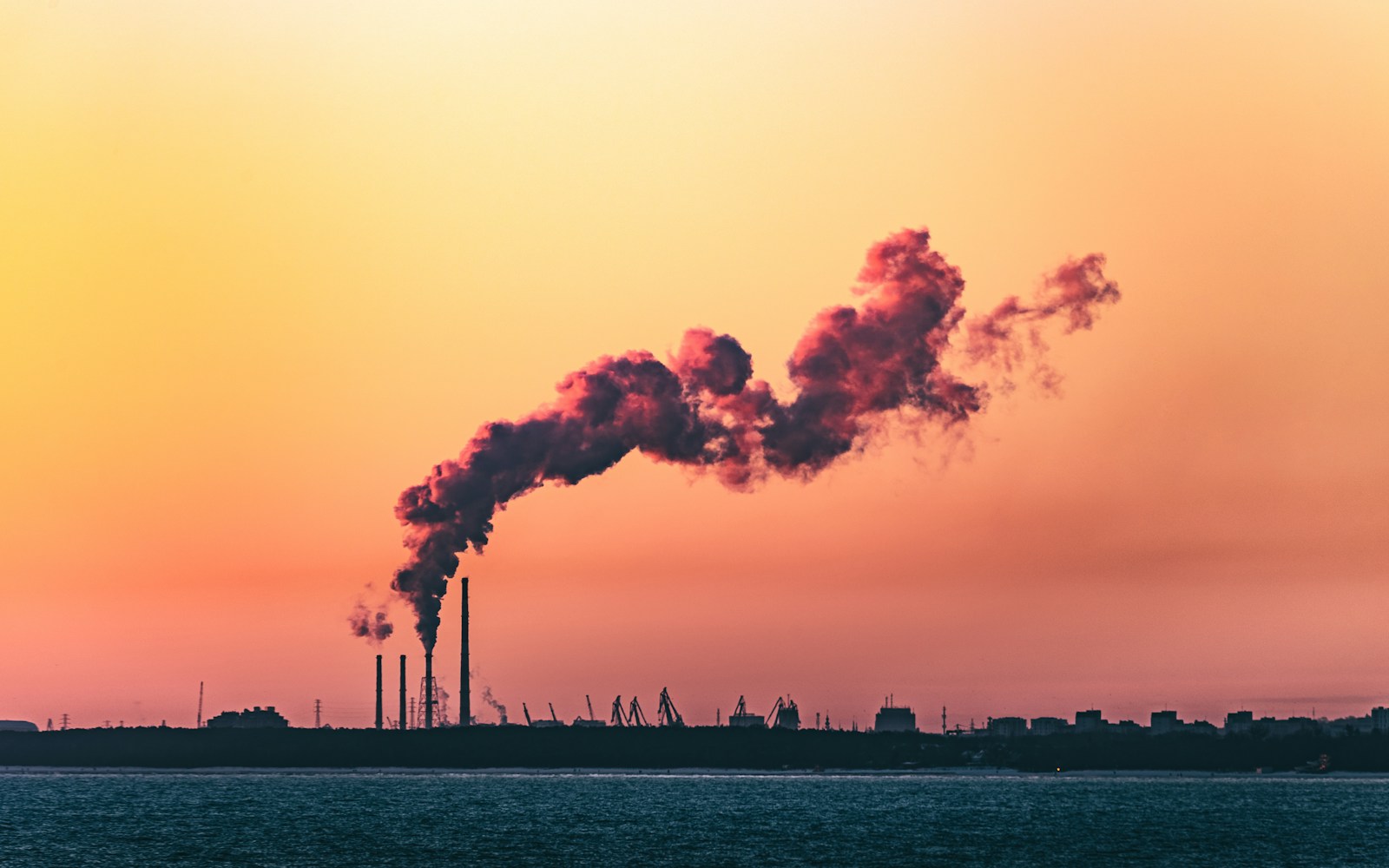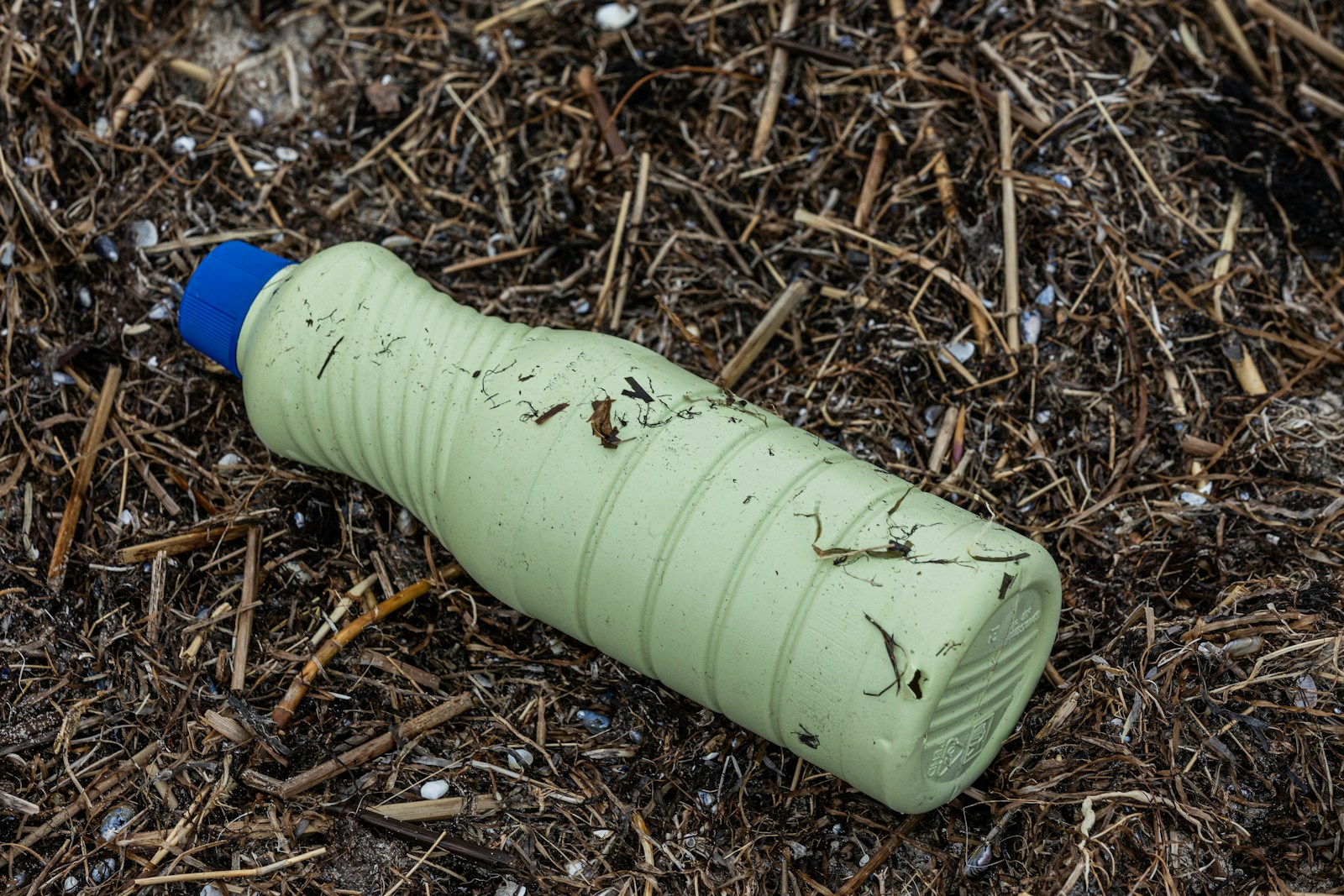Table of Contents
ToggleIntroduction
The modern world is undeniably shaped by plastic. Its versatility and durability have led to its widespread use in countless applications, from packaging that preserves our food to components in the technology that connects us. Yet, this very characteristic of durability poses a significant environmental challenge. As plastic items degrade over time, they break down into smaller and smaller fragments, eventually becoming what we know as microplastics. These tiny particles, often invisible to the naked eye, have infiltrated nearly every ecosystem on our planet and are even being detected within our own bodies. This report will delve into the pervasive issue of microplastics, exploring their definition, origins in both intentional manufacturing and the breakdown of larger items, their alarming global incidence across various environmental compartments and within living organisms, the detrimental impacts they have on both the environment and human health, and the current and potential strategies being developed to remediate this growing problem. Understanding the multifaceted nature of microplastic pollution is crucial for developing effective solutions and mitigating the risks they pose to our world.
This section serves as an engaging introduction, highlighting the ubiquitous nature of plastics and introducing the concept of microplastics as a consequence of their breakdown. It aims to pique the reader’s interest and set the stage for the rest of the report.
What in the World Are Microplastics Anyway? Let’s Break It Down
The term “microplastics” has gained significant attention in recent years, but a clear understanding of what these particles are is essential to grasp the magnitude of the issue. At its core, a microplastic is simply a very small piece of plastic. However, the scientific community has established more specific parameters to define these tiny troublemakers.
Size Matters: Defining These Tiny Troublemakers
The most widely accepted definition of microplastics refers to plastic fragments that are less than five millimeters in length . To put this into perspective, five millimeters is roughly the size of the eraser found on the end of a standard pencil . While this upper limit is consistently used, some definitions also include a lower size boundary, extending down to 1 nanometer (nm) . For context, a strand of human hair is approximately 80,000 nanometers wide . Particles smaller than 1 micrometer (µm), which is equal to 1000 nanometers, are often classified as nanoplastics, representing an even smaller subset of microplastics . The establishment of this size range is fundamental for researchers to study and monitor these particles, as it differentiates them from larger plastic debris and helps in developing appropriate detection and analysis methods. The fact that the lower limit of the definition can vary, with some sources starting at 1 nm while others focus on particles larger than 1 µm, indicates that the scientific understanding of the smallest plastic particles and their behavior is still evolving . These nanoplastics, due to their minute size, possess the potential to interact with biological systems in unique ways compared to larger microplastics .
Primary vs. Secondary: Where Do They Come From?
Microplastics don’t all originate in the same way. They are broadly categorized into two main types based on their source: primary and secondary microplastics . Primary microplastics are those that are intentionally manufactured to be small for specific uses . Examples include the microbeads previously used in cosmetics and personal care products, plastic glitter, and the small plastic pellets known as nurdles, which serve as raw materials for the production of larger plastic items . Secondary microplastics, on the other hand, are not intentionally produced at a small size. Instead, they result from the breakdown and fragmentation of larger plastic items such as plastic bottles, bags, food containers, and fishing gear . This fragmentation occurs over time due to exposure to environmental factors like sunlight, heat, and mechanical abrasion from wind and waves . The distinction between these two categories is crucial because it highlights that microplastic pollution stems not only from the mismanagement of large plastic waste but also from the intentional use of plastic in minuscule forms within various products and industrial processes . Addressing this complex issue requires strategies that target both the reduction of large plastic waste entering the environment and the elimination of intentionally manufactured microplastics where feasible.
Not All Plastics Are Created Equal: Different Types of Microplastics
The world of microplastics is not homogenous; these tiny particles exhibit a wide range of shapes and are composed of various types of plastic polymers . Common shapes include fibers, films, foams, beads or spheres, pellets, and fragments . For instance, microfibers are often shed from synthetic textiles, while fragments typically result from the physical breakdown of larger plastic items . The specific shape of a microplastic particle can be influenced by the material it originates from, the type of weathering it undergoes, and the amount of time it spends in the natural environment . Furthermore, microplastics are made from a diverse array of synthetic polymers, each with its own chemical composition and properties . Some of the most commonly encountered polymers in microplastics include polyethylene (PE), used in many packaging materials; polypropylene (PP), found in containers and fibers; polystyrene (PS), used in foam products; polyamide (PA), also known as nylon, common in textiles and fishing nets; polyester (PES), prevalent in clothing; and acrylic (AC), used in synthetic fabrics . The prevalence of certain polymers like PE, PP, and PS in microplastic pollution likely mirrors their high levels of production and consumption globally . The abundance of fibers, particularly in freshwater environments, strongly indicates synthetic textiles as a major source of this type of microplastic . This diversity in shape and chemical composition can affect the behavior of microplastics in different environments, their potential to adsorb and release other pollutants, and their likelihood of being ingested by various organisms .
They’re Everywhere! The Shocking Global Incidence of Microplastics
Perhaps one of the most concerning aspects of microplastics is their ubiquitous presence across the globe. These tiny particles have been detected in virtually every environmental compartment that scientists have investigated, highlighting the pervasive nature of plastic pollution.
Our Oceans and Marine Life: Swimming in Plastic?
The world’s oceans have become a significant sink for plastic waste, and consequently, microplastics are now found in every marine habitat, from the surface waters to the deepest ocean trenches . Estimates suggest that trillions of microplastic particles are currently floating on the surface of the world’s oceans, with untold trillions more dispersed throughout the water column . Studies have found that the overall concentration of microplastics in the five major oceans ranges from 0.002 to 62.50 items per cubic meter, with the Atlantic Ocean exhibiting the highest mean concentration . Plastic waste constitutes a staggering 80% of all marine pollution, and approximately 8 to 10 million metric tons of plastic end up in the ocean each year . This widespread contamination has led to the ingestion of plastics by a vast array of marine life. To date, about 1,300 marine species have been documented to ingest plastics . Microfibers are the most prevalent category of microplastics found in the digestive systems of marine fish, crustaceans, and bivalves . Even large filter-feeding animals like blue whales are consuming up to 10 million pieces of microplastic per day . The higher concentration of microplastics observed in the Atlantic Ocean compared to other oceans, such as the Southern Ocean which has the lowest mean concentration, could be attributed to a combination of factors including higher population densities and industrial activity in the bordering landmasses, as well as the influence of ocean current patterns that may accumulate plastic debris in this region . Furthermore, the prevalence of microfibers in the diets of marine organisms underscores the significant contribution of synthetic textiles to marine pollution .
Freshwater Sources: Invading Our Rivers and Lakes
The contamination of microplastics is not limited to the marine environment; freshwater sources such as rivers and lakes across the globe are also affected. Research has frequently detected microplastics in these vital ecosystems . One review of fifty studies found that microplastic number concentrations in freshwater spanned ten orders of magnitude . A global survey indicated that 83% of freshwater samples were contaminated with plastics . Significant quantities of microplastics have been found in major freshwater bodies, including Lake Superior in North America, Swiss lakes in Europe, and Lake Taihu in China . Interestingly, studies have shown that rivers, particularly those located near urban centers, often exhibit high levels of microfiber contamination . Smaller urban rivers can also play a substantial role in transporting plastic pollution to the oceans . The concentration of microplastics in freshwater systems can vary considerably, with some research suggesting that lakes in China and Saudi Arabia have much higher contamination levels compared to water bodies in Europe, North America, and Africa . This disparity likely reflects differences in waste management infrastructure and practices across these regions. Moreover, rivers serve as critical pathways for the movement of microplastics from terrestrial sources to the marine environment .
Soil and Agricultural Lands: A Hidden Contaminant
Beyond aquatic environments, microplastic pollution is also a significant concern in terrestrial ecosystems, particularly in soil and agricultural lands. Research has uncovered a widespread presence of microplastics across diverse soil types and land uses, with concentrations ranging from 16.6 to 21.9 particles per gram of soil . Some estimates suggest that the amount of microplastics accumulating in agricultural soils might even exceed that in the oceans . These particles enter agricultural systems through various pathways, including the degradation of plastic films used as soil mulches, the application of treated sewage sludge as fertilizer, and the use of plastic-coated fertilizers and seed coatings . Studies have found a positive correlation between the levels of macroplastic and microplastic contamination in soil, indicating that the breakdown of larger plastic items used in agriculture contributes significantly to the problem . The application of sewage sludge to agricultural fields as a source of nutrients, while beneficial in some respects, introduces a substantial amount of microplastics into the soil environment, as wastewater treatment processes are not always effective at removing these small particles .
Floating in the Air: Are We Breathing Plastic?
Microplastics are not confined to water and soil; they have also been detected in the atmosphere, both indoors and outdoors . Outdoor microplastic levels can vary widely across global cities, with reported ranges from 36 to 118 particles per square meter per day . Interestingly, indoor environments often exhibit even higher concentrations of microplastics in the air . Global models estimate that approximately 124 kilotons of microplastics are suspended in the atmosphere, with about 19 million tons being deposited onto the Earth’s surface each year . Sources of these airborne microplastics include the shedding of fibers from synthetic textiles, the abrasion of vehicle tires on roads, and general urban dust . Due to their small size and buoyancy, microplastic particles can become airborne and travel long distances . In urban areas, the deposition of plastic fibers has been recorded to reach high levels, highlighting the ability of microplastics to contaminate air, food, and beverages . The higher levels of microplastics observed in indoor air compared to outdoor air suggest that indoor sources, such as synthetic carpets, furniture, and clothing, play a significant role in contributing to airborne microplastic pollution and human exposure through inhalation . Moreover, the ability of atmospheric microplastics to be transported over long distances, even reaching remote regions like the Arctic and Antarctica, underscores the global nature of this pollution .
On Our Plates: Microplastics in the Food We Eat
Perhaps one of the most direct ways humans are exposed to microplastics is through the food we consume. These tiny plastic particles have been found in a wide array of food products, including seafood such as fish and shellfish, as well as in everyday items like sea salt, honey, tea, sugar, fruits, and vegetables . Studies have estimated that individuals may ingest between 39,000 and 52,000 particles of microplastics per year just from food , and this number can increase significantly when considering intake through air and water . Microplastics can enter the food chain through various routes, including the contamination of water sources used in agriculture and food processing, the application of sewage sludge as fertilizer on farmland, and through the degradation of plastic packaging materials that come into contact with food . Seafood, particularly in Southeast Asian countries where fish and other marine creatures are a significant part of the diet, has been identified as a major source of dietary microplastics, as marine life often mistake plastic for food . The presence of microplastics in such a diverse range of food items indicates that this contamination is pervasive throughout the food system . Research suggests that in industrializing countries like Indonesia, the microplastic concentration in table salt can be significantly higher than in more industrialized nations, highlighting regional disparities in food contamination levels .
Inside Us? The Presence of Microplastics in the Human Body
Given the widespread presence of microplastics in our environment and food, it is perhaps unsurprising that these particles have now been detected within the human body itself. Microplastics have been found in various human organ systems, including the cardiovascular, digestive, endocrine, integumentary, lymphatic, respiratory, reproductive, and urinary systems . They have also been observed in other human biological samples such as breast milk, meconium (a newborn’s first stool), semen, stool, sputum, and urine . One recent study estimated that adults could be taking in up to 121,000 microplastic particles per year through air, food, and beverages . Another report suggests that annual microplastic exposure per person ranges from 70,000 to over 120,000 particles . The main routes of entry into the human body are believed to be through ingestion via food and water, and through the inhalation of air and dust containing microplastics . The detection of microplastics in sensitive areas like the placenta of pregnant women and in breast milk raises particular concerns about potential impacts on fetal and infant development . While microplastics are being increasingly detected in human tissues and organs, the long-term health effects of this exposure are still a subject of ongoing research and are not yet fully understood.
From Big to Small: Unraveling the Origins of Microplastics
To effectively address the problem of microplastic pollution, it is essential to understand where these tiny particles originate. As previously discussed, microplastics are broadly classified as either primary or secondary, each with distinct sources.
Primary Suspects: Microplastics Made to Be Small
Primary microplastics are intentionally manufactured at a small size for specific commercial or industrial uses . These particles enter the environment directly without undergoing the breakdown of larger plastic items.
The Case of the Missing Microbeads
Microbeads are a well-known example of primary microplastics. These are tiny, manufactured polyethylene plastic beads that were commonly added as exfoliants to health and beauty products such as some cleansers and toothpastes . Due to their small size, microbeads could easily pass through wastewater treatment plants and end up in rivers, lakes, and oceans, where they could be ingested by aquatic life . Recognizing the environmental harm caused by these particles, many countries have implemented bans on the use of microbeads in rinse-off cosmetic products . This regulatory action demonstrates the effectiveness of targeted measures in reducing a specific source of primary microplastic pollution .
Nurdles: Tiny Pellets, Big Problem
Another significant source of primary microplastics is nurdles, also known as pre-production plastic pellets . These small, round or disc-shaped plastic pieces, typically between 2 and 5 millimeters in size, are used by the plastics industry as raw materials to manufacture a wide variety of plastic products . Nurdles can enter the environment through accidental spills during shipping, handling, or at manufacturing facilities . Due to their small size and resemblance to food, nurdles can be easily ingested by wildlife, causing harm to marine and freshwater ecosystems . Preventing the release of nurdles into the environment requires improved handling practices and stricter regulations throughout the plastics production and transportation chain .
The Fiber Frenzy: Shedding from Our Clothes
A less visible but highly significant source of primary microplastics is the shedding of synthetic fibers, also known as microfibers, from our clothing and other textiles made from synthetic materials like polyester, nylon, and acrylic . These tiny plastic fibers are released during washing and drying processes due to the mechanical and chemical stresses that fabrics undergo in laundry machines . Research has shown that a single load of synthetic laundry can release millions of microfibers into wastewater . Many wastewater treatment plants are not equipped to filter out these extremely small fibers, allowing them to enter rivers, lakes, and ultimately the oceans . Microfibers are now recognized as a major contributor to microplastic pollution in various environmental compartments .
The Breakdown Crew: Secondary Microplastics in Action
Secondary microplastics are formed from the fragmentation of larger plastic items once they enter the environment . This breakdown process is driven by a variety of environmental factors.
When Bottles and Bags Fall Apart
Common plastic items such as beverage bottles, plastic bags, food containers, and packaging materials are significant sources of secondary microplastics . When these larger plastic items are improperly discarded or lost in the environment, they are exposed to sunlight, heat, wind, and waves, causing them to become brittle and break down into smaller and smaller pieces over time . Beach litter, in particular, contributes significantly to the production of secondary microplastics as larger plastic debris is subjected to the abrasive action of sand and waves, as well as the degrading effects of UV radiation from the sun . Given that plastic can take hundreds, if not thousands, of years to fully degrade , the accumulation of secondary microplastics in the environment is a long-term concern, even if efforts to reduce new plastic production are successful.
Tire Troubles: Abrasion on the Roads
The wear and tear of vehicle tires is another significant source of secondary microplastic pollution . Tires are made from a combination of natural and synthetic rubber, with synthetic rubber being a plastic polymer . As vehicles drive, the friction between the tires and the road surface causes tiny particles to break off . These tire wear particles, which are essentially microplastics, can become airborne and contribute to air pollution, or they can be washed off roads by rain and enter waterways, eventually reaching rivers, lakes, and oceans . Studies have estimated that vehicle tires contribute a substantial percentage of the primary microplastics found in the oceans .
Fishing for Trouble: Discarded Gear
Fishing gear, such as nets and lines, is often made from durable synthetic plastic materials like nylon . During their use, fishing nets can shed microfibers directly into the ocean and other water bodies . Furthermore, when fishing gear is lost, abandoned, or discarded, it can persist in the marine environment for long periods and undergo fragmentation, leading to the formation of secondary microplastics . This discarded fishing gear, sometimes referred to as “ghost gear,” poses a significant threat to marine life through entanglement and ingestion, and it also contributes to the growing problem of microplastic pollution .
The Ripple Effect: Environmental Impacts of Microplastic Pollution
The presence of microplastics in various ecosystems is not without consequences. These tiny particles can have significant impacts on the environment, affecting a wide range of organisms and ecological processes.
Trouble in the Deep: Marine Ecosystems Under Threat
Marine ecosystems are particularly vulnerable to the impacts of microplastic pollution. The sheer volume of plastic entering the oceans each year has led to widespread contamination with microplastics, posing a multitude of threats to marine life and the overall health of these ecosystems.
Mistaken Identity: Ingestion by Marine Animals
Marine animals across the food web, from the smallest plankton to the largest whales, often mistake microplastics for food and ingest them . This misidentification can occur due to the size range of microplastics, which overlaps with that of many natural food sources, or due to the way microplastics might smell or appear in the water . The ingestion of microplastics can have severe consequences for marine organisms, including physical blockages in their digestive tracts, reduced feeding efficiency, malnutrition due to a false sense of fullness, internal injuries, and even mortality . The fact that even plankton, the base of the marine food chain, ingest microplastics is particularly concerning, as these plastics can then be transferred up the food web to larger predators, potentially affecting entire ecosystems and even humans who consume seafood .
Upsetting the Balance: Disruption of Food Chains
Beyond the direct harm to individual marine animals, microplastic pollution can also disrupt entire food chains and ecological processes . The presence of microplastics can affect the growth, reproduction, and behavior of various marine organisms at different trophic levels . For instance, research has shown that exposure to microplastics in high enough concentrations can alter photosynthesis in phytoplankton, the microscopic plants that form the base of many marine food webs, and reduce feeding rates in zooplankton, which consume phytoplankton . These impacts at the lower levels of the food chain can have cascading effects on the populations of larger animals that depend on them for food . Furthermore, microplastics have the potential to interfere with essential ocean processes such as carbon storage and nitrogen cycling . Phytoplankton play a crucial role in absorbing carbon dioxide from the atmosphere and storing it in the deep ocean through the biological carbon pump . Microplastics may “clog” this pump and slow down the ocean’s uptake of carbon, potentially exacerbating climate change . Microplastics in marine sediments can also alter microbial communities and disrupt nitrogen cycling, which can lead to problems like toxic algal blooms .
Freshwater Woes: Impacts on Lakes and Rivers
Freshwater ecosystems, vital for biodiversity and human water supply, are also facing significant environmental impacts from microplastic pollution . Similar to marine environments, organisms in freshwater systems can ingest microplastics, leading to physical harm, nutrient deficiencies, and even death . Microplastics in freshwater can also act as vectors for various toxic chemicals, metals, and pathogens, potentially introducing these harmful substances into the food chain . Studies have shown that microplastics can accumulate within freshwater systems, particularly at the source of rivers or streams, where the water flow is relatively slow, allowing pollutants to reside longer . This accumulation can lead to higher concentrations of microplastics in these areas, potentially increasing the exposure risk for organisms living there. Research has also indicated that microplastics can disrupt the balance of microbiota in freshwater ecosystems, which are essential for maintaining healthy and sustainable environments .
Dirty Deeds in the Soil: Effects on Agriculture
The presence of microplastics in soil and agricultural lands can have detrimental effects on soil health and agricultural productivity . Microplastics can alter the physical properties of soil, such as water retention, aeration, and temperature regulation, which are crucial for plant growth and nutrient availability . These alterations can hinder root development and nutrient uptake by plants, potentially leading to reduced crop yields and lower quality produce . Furthermore, microplastics can affect soil microbial diversity, which plays a vital role in nutrient cycling and overall soil fertility . Some studies have shown that exposure to plastics can result in reduced weight, height, chlorophyll content, and root growth in plants . Microplastics in soil can also adsorb various toxic substances, including heavy metals and pesticides, increasing their concentration and potentially making them more available for uptake by plants, posing a risk to food safety .
A Human Health Hazard? Potential Impacts of Microplastics on Us
The increasing presence of microplastics in our environment and their detection within the human body have raised concerns about potential health impacts. While research in this area is still in its early stages, some potential risks have been identified.
Eating Plastic? Ingestion Through Food and Water
Humans are exposed to microplastics primarily through the ingestion of contaminated food and water . Microplastics have been found in both tap water and bottled water, as well as in various food items including seafood, salt, honey, tea, sugar, fruits, and vegetables . Estimates of the amount of microplastics humans ingest annually vary, but some research suggests it could be tens of thousands or even over a hundred thousand particles . The exact number likely depends on various factors such as diet, geographical location, and the level of microplastic contamination in local food and water sources . While the long-term health effects of ingesting these particles are still being investigated, there is concern that they could potentially cause inflammation, disrupt the gut microbiome, and act as carriers for harmful chemicals.
Breathing It In: The Risks of Airborne Microplastics
Inhalation is another significant route of human exposure to microplastics . Airborne microplastics, originating from sources like synthetic textiles, tire wear, and urban dust, can be directly inhaled into the respiratory system . Due to their small size, these particles can travel deep into the lungs . It has been estimated that humans can inhale millions of microplastic particles annually . Research on the inhalation of micro- and nanoparticles of plastics suggests a range of adverse effects on the respiratory system, including inflammation, irritation, asthma-like reactions, and potentially more serious conditions with chronic exposure . Some studies have even linked the inhalation of microfibers to lung diseases.
Hitching a Ride: Transfer of Harmful Substances
One of the major concerns regarding microplastics and human health is their potential to act as carriers for harmful chemicals and pathogens into the body . Plastics often contain various chemical additives, such as bisphenol A (BPA) and phthalates, which are known to have endocrine-disrupting effects . These additives can leach out of the plastic particles once they are ingested or inhaled. Additionally, microplastics in the environment can adsorb and accumulate other toxic pollutants, such as heavy metals and persistent organic pollutants (POPs), onto their surfaces . When these contaminated microplastics enter the human body, they can potentially release these harmful substances, leading to a complex mixture of exposures and potential adverse health effects .
What Can We Do About It? Exploring Solutions to Microplastic Pollution
Addressing the pervasive problem of microplastic pollution requires a multifaceted approach involving technological innovation, policy changes, and individual actions.
Tech to the Rescue? Technological Removal Strategies
Researchers and engineers are actively developing technologies aimed at removing microplastics from various environmental matrices.
Cleaning Up Our Waterways
Several technological solutions are being explored to remove microplastics from water sources. For drinking water, filtration systems employing reverse osmosis and ultrafiltration have been shown to be effective at removing particles smaller than 100 nanometers, which includes most microplastics . Water distillation is another method that can separate microplastics from water . On a larger scale, innovative technologies like the Bubble Barrier have been developed to capture plastic pollution, including microplastics, in rivers by creating a wall of air bubbles that directs the plastic to the surface for collection . Additionally, researchers are investigating the use of materials like activated carbon derived from waste plastics, which has demonstrated high efficiency in removing nanoplastics from wastewater . These technologies represent promising steps towards mitigating microplastic contamination in our vital water resources.
Filtering the Air
While the provided research material does not detail specific technological solutions for removing microplastics from the air, the increasing awareness of airborne microplastic pollution suggests that this is an area requiring further attention and development. Principles of air filtration used for other particulate matter might be adaptable for capturing microplastics.
Nature’s Way? Biodegradation and Bioremediation
Harnessing the power of biological processes offers another promising avenue for tackling microplastic pollution. Bioremediation, the use of living organisms to remove environmental pollutants, is being explored as a sustainable approach to degrading plastics . Researchers have identified numerous species of bacteria, fungi, and algae that possess the ability to break down various types of plastics through their metabolic activities . These microorganisms often produce enzymes, such as hydrolases and oxidases, that can break down the complex polymer structures of plastics into simpler compounds . Studies have shown that consortia, or combinations of different microbial species working together, can be more effective at plastic degradation than single species alone . While the biodegradation of non-biodegradable microplastics can be a slow process, ongoing research is focused on identifying and engineering more efficient plastic-degrading microorganisms and optimizing the conditions for bioremediation.
Rules and Regulations: Policy Measures for Change
Policy and regulatory measures at local, national, and international levels are crucial for addressing the root causes of microplastic pollution by reducing plastic production and improving waste management . Many regions have implemented bans or restrictions on single-use plastic products like bags, straws, and certain food packaging . The ban on intentionally added microplastics, such as microbeads in cosmetics, in several countries demonstrates the effectiveness of targeted regulations . Extended Producer Responsibility (EPR) schemes are being adopted to make producers responsible for the collection, recycling, and reuse of the plastic in their products . Deposit return schemes for beverage containers aim to increase collection and recycling rates . Governments are also developing national strategies to prevent plastic pollution, outlining actions to reduce production and consumption, enhance recycling infrastructure, and promote research and innovation in this area . These policy interventions are essential for creating a more circular economy for plastics and minimizing their leakage into the environment.
The Ongoing Investigation: Research and Studies on Microplastics
The field of microplastic research is dynamic and rapidly evolving. Scientists worldwide are continuously conducting studies to better understand the sources, distribution, fate, and impacts of microplastics across various ecosystems and on human health. Ongoing research is also focused on developing more effective methods for detecting, quantifying, and removing microplastics from the environment, as well as exploring innovative and sustainable alternatives to conventional plastics. The findings from these studies are crucial for informing policy decisions, technological advancements, and individual actions aimed at mitigating microplastic pollution.
Small Changes, Big Impact: What You Can Do to Help
While large-scale solutions are essential, individuals can also play a significant role in reducing their contribution to microplastic pollution. Simple everyday actions can collectively lead to a substantial impact. These include reducing the consumption of single-use plastics by opting for reusable alternatives like water bottles, shopping bags, and food containers . Choosing clothing made from natural fibers like cotton, wool, or silk can help minimize the release of microfibers from synthetic fabrics . Using a microfiber filter or a fiber-catching device when washing synthetic clothes can prevent these tiny plastics from entering wastewater . Avoiding products that contain plastic microbeads or glitters, even though many have been banned, is still a good practice . Properly disposing of plastic waste and participating in recycling programs are also crucial steps in preventing larger plastics from breaking down into microplastics in the environment . By making conscious choices in our daily lives, we can all contribute to lessening the burden of microplastic pollution.
Conclusion: It’s Time to Tackle the Tiny Plastic Problem
Microplastic pollution represents a significant and multifaceted environmental challenge that demands urgent attention. These tiny particles have infiltrated every corner of our planet, from the vast oceans to the soil that grows our food, and even the air we breathe. Their presence within our own bodies raises concerns about potential long-term health impacts that are still being investigated. Understanding the diverse origins of microplastics, from intentionally manufactured microbeads and nurdles to the fragmentation of larger plastic waste and the shedding of synthetic fibers, is crucial for developing effective mitigation strategies. While technological solutions for removal and biodegradation are promising, and policy measures aimed at reducing plastic production and improving waste management are essential, the collective actions of individuals also play a vital role in curbing this pervasive problem. By making conscious choices to reduce our plastic consumption and properly manage plastic waste, we can all contribute to tackling this invisible threat and safeguarding the health of our environment and ourselves for future generations.
Frequently Asked Questions (FAQs)
- What exactly are nanoplastics, and are they different from microplastics? Nanoplastics are a subset of microplastics, characterized by their extremely small size, typically less than 1 micrometer (1000 nanometers). While microplastics are defined as plastic particles smaller than 5 millimeters, nanoplastics represent the lower end of this size spectrum. Their minute dimensions raise particular concern as they possess the potential to penetrate biological barriers more readily than larger microplastics .
- Is it safe to drink tap water given the presence of microplastics? Microplastics have been detected in tap water globally . However, according to the World Health Organization (WHO), the current levels of microplastics found in drinking water are not considered to pose a significant health risk based on the limited evidence available . Nevertheless, research in this area is ongoing, and individuals concerned about microplastics in their drinking water may choose to use water filtration systems designed to remove these particles, such as reverse osmosis or ultrafiltration filters .
- What are some easy ways I can reduce my personal contribution to microplastic pollution? Individuals can take several practical steps to minimize their contribution to microplastic pollution. These include reducing the use of single-use plastics by opting for reusable alternatives , choosing clothing made from natural fibers over synthetics whenever possible , installing a filter on washing machines to capture microfibers , avoiding products containing microbeads or glitter , and ensuring proper disposal and recycling of plastic waste . Even small changes in daily habits can collectively make a significant difference.
- Are there any natural alternatives to plastic that can help solve this problem? Yes, there is increasing research and development in the area of bioplastics and other natural alternatives to conventional plastics derived from fossil fuels. These alternatives are often made from renewable resources such as cornstarch, sugarcane, or algae and are designed to be biodegradable or compostable, potentially reducing their persistence in the environment . While these alternatives are promising, it is important to consider their full lifecycle impacts and ensure they degrade effectively in real-world conditions .
- What is being done at a global level to address microplastic pollution? Addressing microplastic pollution requires coordinated efforts at various levels. Globally, there is growing awareness and concern about the issue, leading to increased research, policy discussions, and international collaborations. Many countries have implemented regulations such as bans on single-use plastics and microbeads . Organizations like the United Nations are working to raise awareness and promote solutions . Furthermore, there is ongoing development of technologies for microplastic removal and biodegradation, as well as efforts to promote a more circular economy for plastics through increased recycling and reuse .







